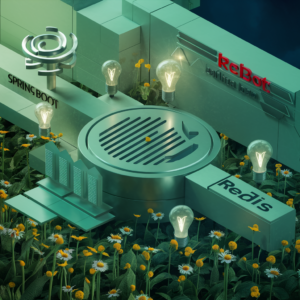In today’s rapidly evolving landscape of software architecture, microservices have emerged as a popular approach for building scalable and resilient applications. However, with the benefits of microservices come unique challenges, particularly in monitoring and maintaining visibility into the performance and health of distributed systems. In this article, we’ll explore strategies and tools for effectively monitoring microservices, ensuring observability across the entire system.
Understanding the Challenges of Monitoring Microservices
Microservices architecture decomposes applications into smaller, independent services, each with its own logic and data storage. While this approach offers benefits such as agility, scalability, and fault isolation, it introduces complexities in monitoring, as individual services interact asynchronously and may be deployed across different environments.
Strategies for Monitoring Microservices
- Distributed Tracing: Implement distributed tracing to track the flow of requests across microservices. By instrumenting each service to generate trace spans and propagate context, you can gain insights into request latency, dependencies, and error propagation.
- Service-Level Metrics: Monitor service-level metrics such as response time, throughput, error rate, and resource utilization. These metrics provide visibility into the performance and health of individual services, enabling proactive detection and resolution of issues.
- Centralized Logging: Aggregate logs from all microservices into a centralized logging platform. By correlating logs across services, you can troubleshoot issues, trace user interactions, and analyze system behavior.
- Health Checks and Circuit Breakers: Implement health checks to verify the readiness and liveness of microservices. Circuit breakers can prevent cascading failures by isolating faulty services and failing fast under adverse conditions.
- Alerting and Notification: Configure alerting rules based on predefined thresholds for metrics such as latency, error rate, and resource usage. Integrate with notification channels to receive timely alerts and take proactive action to address issues.
Tools for Observability in Microservices
- Prometheus: A popular open-source monitoring solution that collects, stores, and queries metrics from microservices. Prometheus provides powerful querying capabilities and integrations with other tools for visualization and alerting.
- Grafana: A visualization and dashboarding tool that integrates seamlessly with Prometheus and other data sources. Grafana enables you to create custom dashboards to visualize metrics and monitor the health of microservices.
- Jaeger: An open-source distributed tracing system that provides end-to-end visibility into requests across microservices. Jaeger captures trace spans and generates dependency graphs to help diagnose performance issues and optimize service interactions.
- ELK Stack (Elasticsearch, Logstash, Kibana): A comprehensive logging and analytics platform for collecting, processing, and visualizing logs from microservices. Elasticsearch indexes logs for fast search and analysis, Logstash processes and enriches log data, and Kibana provides a user-friendly interface for log exploration and visualization.
Conclusion
Monitoring microservices is essential for ensuring the reliability, performance, and scalability of distributed systems. By adopting strategies such as distributed tracing, service-level metrics, centralized logging, health checks, and alerting, along with leveraging tools like Prometheus, Grafana, Jaeger, and the ELK Stack, organizations can achieve comprehensive observability into their microservices architecture. Investing in effective monitoring and observability practices enables proactive detection and resolution of issues, ultimately enhancing the overall resilience and efficiency of microservices-based applications.





